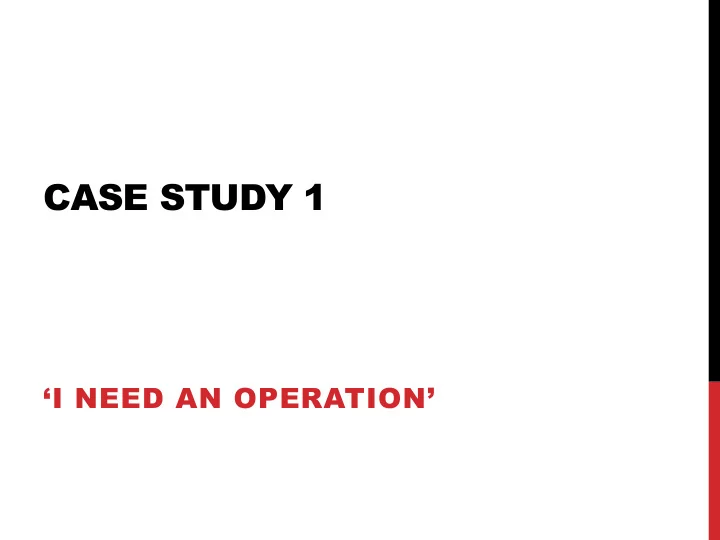

CASE STUDY 1 ‘I NEED AN OPERATION’
LIFE SAVING KEYHOLE VALVE IMPLANTATION An 88 year old man was referred to Dr Clarke with a 1 year history of progressive breathlessness On arrival for his consultation he stated ‘I need an operation’ Unfortunately he had approached his GP practice several times but no investigation had taken place. He was now very breathless and it took him around 3 minutes to recover after taking his shirt off. After a focused history, examination and echocardiogram Dr Clarke diagnosed that the problem was a severely narrowed aortic valve and additional weakness of the pumping power of his heart with a 15% ejection fraction – normal being 60%.
SEVERE AORTIC STENOSIS The aortic valve normally opens to let blood out of the left side of the heart into the main circulation. The combination of the severely narrowed valve and failing heart in an 88 year old made conventional open heart surgery untenable. Examination revealed a low blood pressure and a man gasping for breath when walking 2-3 steps, and leg swelling due to water retention, all consistent with heart failure. The management plan was to try and stabilize his condition so the patient could tolerate investigation and become a realistic candidate for a keyhole valve implantation. Transcatheter aortic valve implantation (TAVI) enables successful valve replacement in elderly patients at high operative risk.
MEDICAL MANAGEMENT TO CREATE A WINDOW OF OPPORTUNITY FOR TAVI His heart rate was too high at 110 beats per minute and his blood pressure was borderline at 90 systolic – normal for his age would have been 140 systolic. Dr Clarke started water tablets to clear the fluid retention and a combination of ivabradine and digoxin – both of which helped to slow the heart rate down to 60 beats per minute and increase pumping efficiency with a rise in blood pressure. The rise in blood pressure allowed gentle initiation of a novel heart failure medication, Entresto (Sacubitril/Valsartan) which had been released for UK use in 2016. The patient was now sufficiently stable to undergo a coronary angiogram and work up for the TAVI
TAVI PROCEDURE Dr Clarke monitored his patient closely and persuaded a cardiologist who specialized in TAVI to take on the case. The TAVI specialist had to be convinced that this was a sensible proposal. In the event the TAVI procedure was uncomplicated and the man was fit for discharge after 3 days. Two months later he is making real progress, much less breathlessness and his blood pressure now 150 systolic. His medication was tailored to maximize benefit and encourage heart muscle recovery. At the end of 3 months his pumping ejection fraction had increased from 15 to 30%. A TAVI requires a balloon placed across the diseased aortic valve which is then blown up to force it out of the way and allow implantation of a self-expanding manufactured valve made from special nitinol alloy support struts and pig valve tissue.
Recommend
More recommend